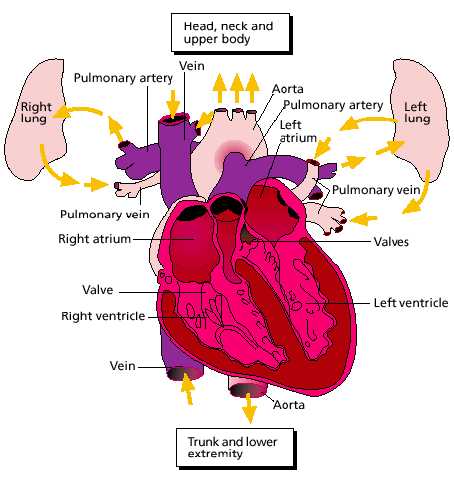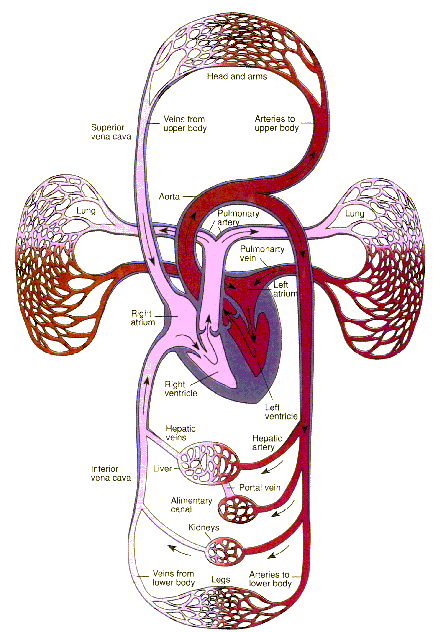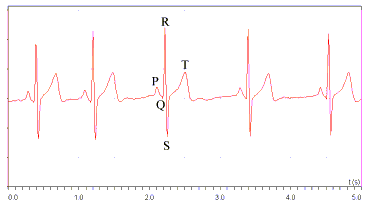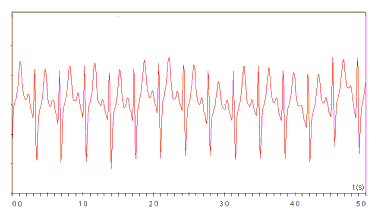The Heart's
Function
from
Polar
Electro
You may think that
monitoring your heart rate is too much science and not enough play, but it can
actually increase your enjoyment.
Cardiovascular
system
The cardiovascular system of the body
has three components:
· The heart (cardiac muscle)
·
The blood vessels
· The blood
The cardiovascular system
serves a number of important functions in the body. It e.g. delivers oxygen and
nutrients to, and removes carbon dioxide and metabolic waste products from,
every cell in the body.
Heart
The heart is the primary
pump that circulates blood through the entire vascular system. Heart has two
atria acting as receiving chambers and two ventricles acting as sending units.
The right side of the heart (right atrium and ventricle) receives the blood
that has circulated throughout the body and sends it into the lungs for
reoxygenation. The left side of the heart (left atrium and ventricle) receives
the oxygenated blood from the lungs and sends it out to supply all body
tissues.

Figure 1. The heart and
blood circulation.

The direction of blood flow is indicated
by arrows.
Cardiac muscle has the unique ability to generate its own
electrical signal that allows it to contract rhythmically (about 60-80 beats
per minute). Although the heart initiates its own electrical impulses, their
timing and effects can be altered by the parasympathetic nervous system, the
sympathetic nervous system and by hormones. At rest, parasympathetic system
activity predominates but during times of physical or emotional stress the
sympathetic system predominates. The electrical activity of the heart can be
recorded as an electrocardiogram (ECG).

Figure 2. Resting ECG. Heart rate 60 beats per
minute.

Figure 3. Exercise ECG. Heart rate 170 beats per
minute.
The cardiac cycle
includes all events occurring between two consecutive heart beats. In
mechanical terms, it consists of all heart chambers undergoing a relaxation
phase (diastole) and a contraction phase (systole). During diastole, the
chambers fill with blood. During systole, the chambers contract and expel their
contents. Ventricular contraction (systole) begins during the QRS complex and
ends in the T-wave.
Heart rate is one of the
simplest and most informative of the cardiovascular parameters. When one begins
to exercise, heart rate increases rapidly in proportion to the exercise
intensity. In Polar heart rate monitors the transmitter in the belt detects the
ECG. When the transmitter picks up a QRS complex, it transmits an
electromagnetic signal, which is detected by the wrist receiver.
By monitoring heart rate, the simple observation that the
harder we exercise, the faster our heart beats is put to good use. Professional
athletes and amateurs alike have for decades been relying on the information
provided by their heart rate monitor for the following
reasons:
- A heart rate monitor is like
a rev counter, giving a precise measurement of exercise intensity.
- Training at your own ideal
pace is made possible with a heart rate monitor.
- Direct measurement of heart
rate during exercise is the most accurate way to gauge performance.
- Progress can be monitored
and measured, increasing motivation.
- It maximizes the benefits of
exercise in a limited amount of time.
- It introduces objective
observation. Are you on the right track? Are you improving?
- It is a tool for regulating
frequency and intensity of workouts.
- Because of the immediate
feedback it provides, heart rate monitoring is an ideal training
partner.
How does it work?
When you start training, your heart rate increases rapidly in proportion to the
intensity of the training. In Polar Heart Rate Monitors, the transmitter belt
detects the electrocardiogram (ECG - the electric signal originating from your
heart) and sends an electromagnetic signal to the Polar wrist receiver where
heart rate information appears.
The heart moves blood from the lungs
(where the blood picks up oxygen) to the muscles (which burn the oxygen as
fuel) and back to the lungs again. The harder the training, the more fuel the
muscles need and the harder the heart has to work to pump oxygen-rich blood to
the muscles.
As you get fit, your heart is able to pump more blood with
every beat. As a result, your heart doesn’t have to beat as often to get
the needed oxygen to your muscles, decreasing resting heart rate and exercise
heart rate on all exertion levels.
Why Monitor Heart Rate During
Outdoor Activities?
You may be familiar with heart rate monitoring in
running and road cycling, but it is just as valuable during other outdoor
sports.
There are many reasons to monitor your heart rate
during Outdoor Sports:
• Pace - You can use heart rate as a
speedometer to set a pace that you’ll be able to maintain. The
personalized nature of heart rate means the pace will be right for you.
• Energy expenditure - Measuring heart
rate allows the determination of energy expenditure so that you know how many
calories to ingest to keep going.
• Adaptation - Heart rate responds to
internal and external factors, giving you a way to monitor your internal
condition (energy expenditure, aerobic fitness and indirectly - hydration) and
the effects of altitude and weather. The Polar HRrest test can help you
determine how you’re adapting.
• Intensity - Heart rate is an
accurate measure of the intensity of an activity - you’ll know how hard
you are working.
• Safety -
Monitoring heart rate can keep you from pushing too hard, thus reducing your
risk of injury.
• Progress - Heart rate allows you to
objectively measure improvements in your level of fitness.
• Planning - A plan that includes how
hard to exercise, measured using heart rate, will help you accomplish your
goals. Use the Polar FitnessTest to measure changes in your level of fitness
and evaluate your plan.
• Variety - You may think that
monitoring your heart rate is too much science and not enough play, but it can
actually increase your enjoyment. You can be extremely creative with your time
and avoid the pitfall of doing the same thing day after day. |